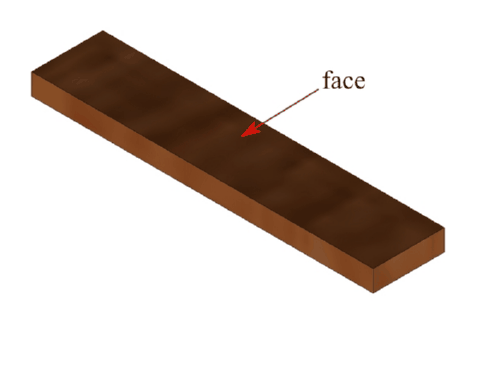|
|
 |
 |
|
Boards |
 |
 |
|
Board feet - The measure of volume of wood boards. Lumber yards typically sell hardwoods as a price per board foot, as their supplies of lumber aren't always consistent in nominal dimensions usually found at home improvement centers. To calculate board feet, multiply the thickness (inches) x width (inches) x length (feet) and divide by 12. To figure the amount you'll pay for the lumber, multiply the price per board foot by the board feet calculation.
Ex. 3/4" x 10" x 10' = 75 / 12 = 6.25 board feet @ $2/board foot = $12.50
|
 |
 |
|
Edge - A board's edges measure the length of the board and are perpendicular to the faces. On a 1 x 4 x 8, the edge width is represented by the 1 (which measures 3/4 inch) and the edge length is represented by the 8 (in feet). The grain of the wood is less visible on the edge, but still apparent. Profiles such as roundovers, chamfers, and rabbets are cut along the edge of a board.
|
 |
 |
|
End - The end is just that, the end of the board. On a 1 x 4 x 8, the end length is represented by the 4 (which measures 3 1/2 inches), and it's width is represented by the 1 (which measures 3/4 inch). End grain, basically the start of the grain as it travels through a board, is visible on the end of a board. The end will absorb more finish than any other part of board (the grain acts like straws), so it should be sanded well or have a prestain conditioner applied.
|
 |
 |
|
Face - The faces of a board are the two widest surfaces. On a 1 x 4 x 8, the face width is represented by the 4 (which measures 3 1/2 inches). When creating an edge-glued panel, the faces are exposed on both the top and bottom. Faces provide the best view of wood grain and are often the "showcase" parts of a project. The "open grain" of woods such as oak are most apparent on the face. A dado, for example, is cut on the face of a board.
|
 |
|
|
 |
 |
 |
|
Nominal and actual dimensions - A nominal dimension is how wood boards are listed for sale, as in 2 x 4 x 8. The actual dimension of this board is 3/4" x 3 1/2" x 8'. The actual thickness and width of the board are different, but the length is not. Nominal dimensions are generally the first cut and unfinished and/or green dimensions of the boards prior to being dried. The boards shrink during the drying process, and then are finished (planed/sanded) to the actual dimension. For deck boards, and many hardwoods available at lumber yards, thicknesses are listed in 1/4 increments, such as 5/4 (1-inch thick in the case of the deck boards). Here are common nominal and actual dimensions.
|
 |
 |
|
Thickness:1 x = 3/4"2 x = 1 1/2"3 x = 2 1/2"4 x = 3 1/2"Width:x 1 = 3/4"x 2 = 1 1/2"x 3 = 2 1/2"x 4 = 3 1/2"x 6 = 5 1/2"x 8 = 7 1/4"x 10 = 9 1/4"x 12 = 11 1/4" |
|
|
 |
| (C) Chris Hill/Chief’s Shop 2009-2014 |
|
|
|
|